Art Beat: Polar bears' plight at heart of Whaling Museum exhibit
Most Americans have never seen a polar bear in its natural Arctic habitat, be they in the international territory of the North Pole, or one of five nations: the United States (Alaska), Canada, Russia, Greenland, or Norway (Svalbard). A few more may have had the opportunity to see the great white creatures in an American zoo, but it should be noted that as of 2018, that number totaled 45.
It’s likely that the last time most had even a fleeting thought about a polar bear (also referred to as white bear, sea bear, ice bear or great white northern bear) might’ve been while watching a Disney cartoon or unwrapping a Klondike Bar.
“Polar Bears (Ursus Maritimus) and the Arctic Imaginary,” on display in the Center Street Gallery at the New Bedford Whaling Museum, aims to change that. The timing is appropriate. Climate change and global warming have had devastating effects on the Arctic. The continued loss of sea ice poses a particularly fatal danger to polar bears, as they struggle to find nourishment and to breed.
The New Bedford Whaling Museum, with its vast array of paintings, prints, carvings, books, photographs and cultural objects that focus on the polar bear within their collection, is uniquely suited to sound the clarion call. It is time to heed that call. The polar bear should be considered a bellwether. The decline of the species should be understood as a distress call for the planet.
The exhibition includes works by American, German, Dutch and British artists, along with Inupiat crafters, and date from the late 1700s to 2017.
Many of the older works on display, including oil paintings, lithographs and etchings, and illustrations, are somewhat predictably locked into a celebratory era of global manifest destiny, colonialism, the rise of industry and more than a little bit of self-congratulation.
In one display case is an old English leatherbound book, authored by William Henry Davenport Adams, called “The Arctic: A History of Its Discovery, Its Plants, Animals and Natural Phenomena.” The title itself reveals a pompous Euro ethnocentrism. The Arctic was no more discovered by Europeans than America was “discovered” by Columbus. But it opened the doors to the exploitation of natural resources and native cultures.
There are a number works, such as the Dutch painter Pieter Lofvers “Ship Wilhelm of Zaandam on the Greenland Grounds” which mix a pinch of history with boys' adventure stories, animal identification, hero mythology, and national chauvinism into a complicated celebratory morass.
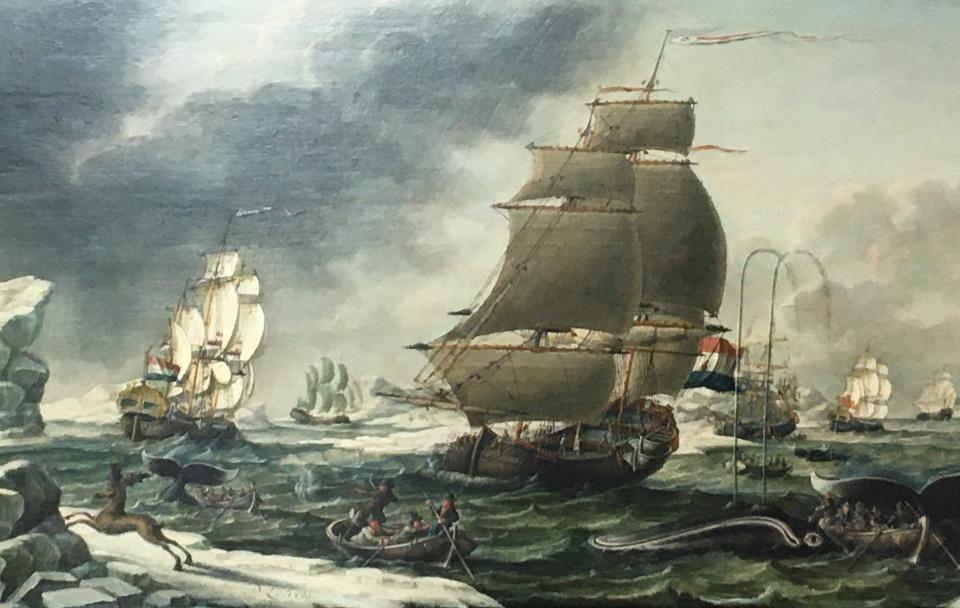
Of course, the ships, the whales, the flags and the like work to provide an environmental context for the star of the show: the polar bear.
In “Arktische Fauna,” a charmingly illustrated chromolithograph by the German artist Gustav Muetzel, a polar bear takes center stage among a gathering of his Arctic neighbors, including an owl, hare, wolverine, walrus, whale and a dozen more.
A highlight of the exhibition is “Intruders of the North,” an 1888 oil painting by Charles Sidney Raleigh, in which two polar bears peer out from a jutting ice floe, as two ships approach, perhaps experiencing a bit of ursine trepidation.
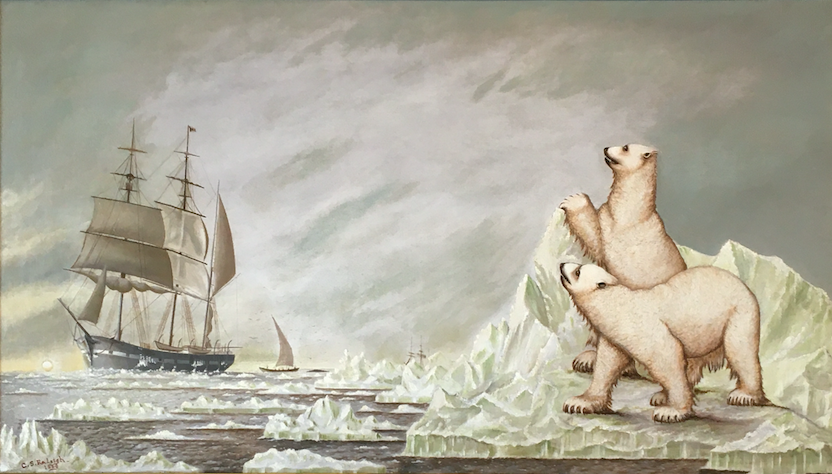
“Polar Bear Eating A Seal,” a chromolithograph by the Danish printmaker Alfred Jacobsen, features one bear tearing into its prey while another watches seagulls fly away. Behind them both is a giant icy formation that suggests a ferocious bear god, with a gaping maw of sharp teeth and a piercing dark eye.
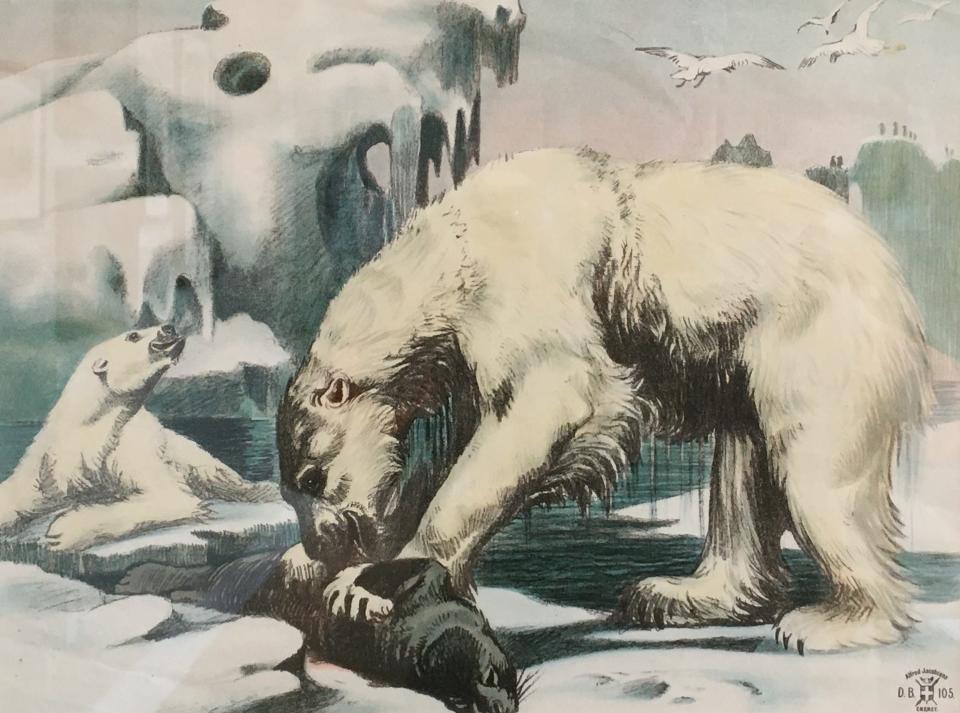
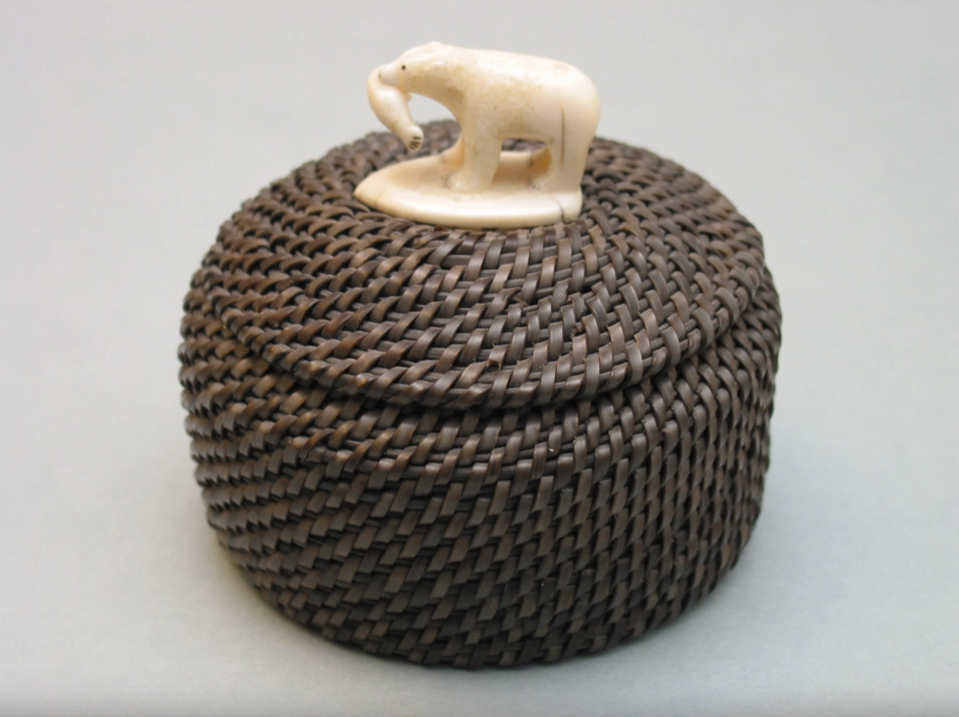
There are a number of unattributed objects on display, given the listing “maker once known.” Some are surely created by Inupiat (or Inuit) makers. Many of those objects are ceremonial or utilitarian and therefore untitled but they are, nonetheless, objects of beauty and all utilize the image or form of the polar bear. They include tiny carvings of bone or walrus tusk and a pastry crimper.
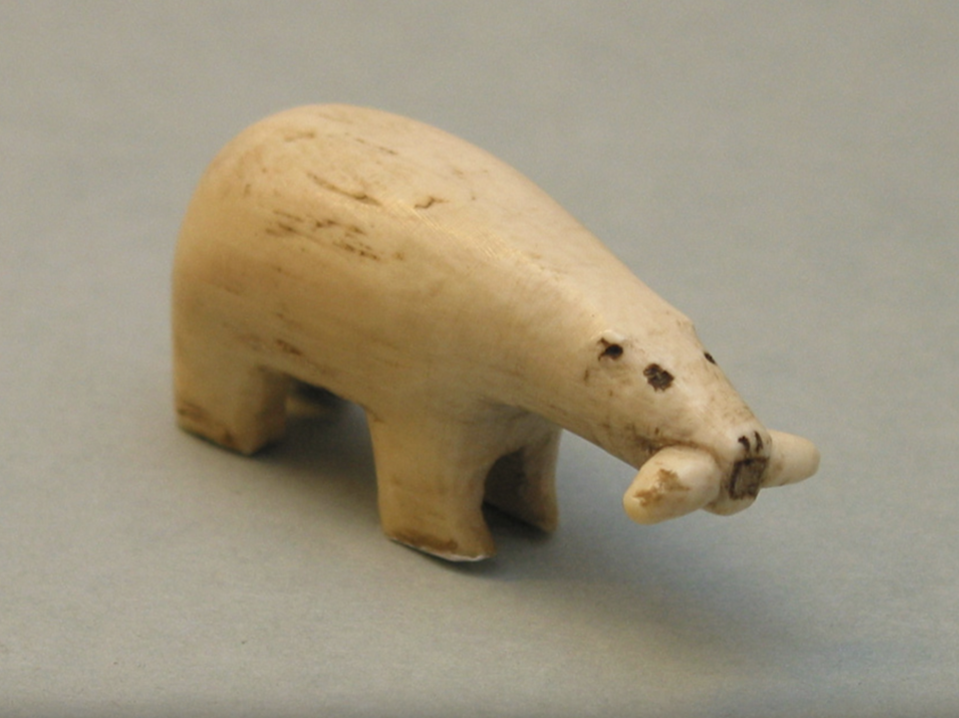
There is a pincushion created in 2000 by Elizabeth A. Patkotal, an Inpupiat artisan, certainly with reverence, as it was made not only with felt, beads and leather but also polar bear fur.
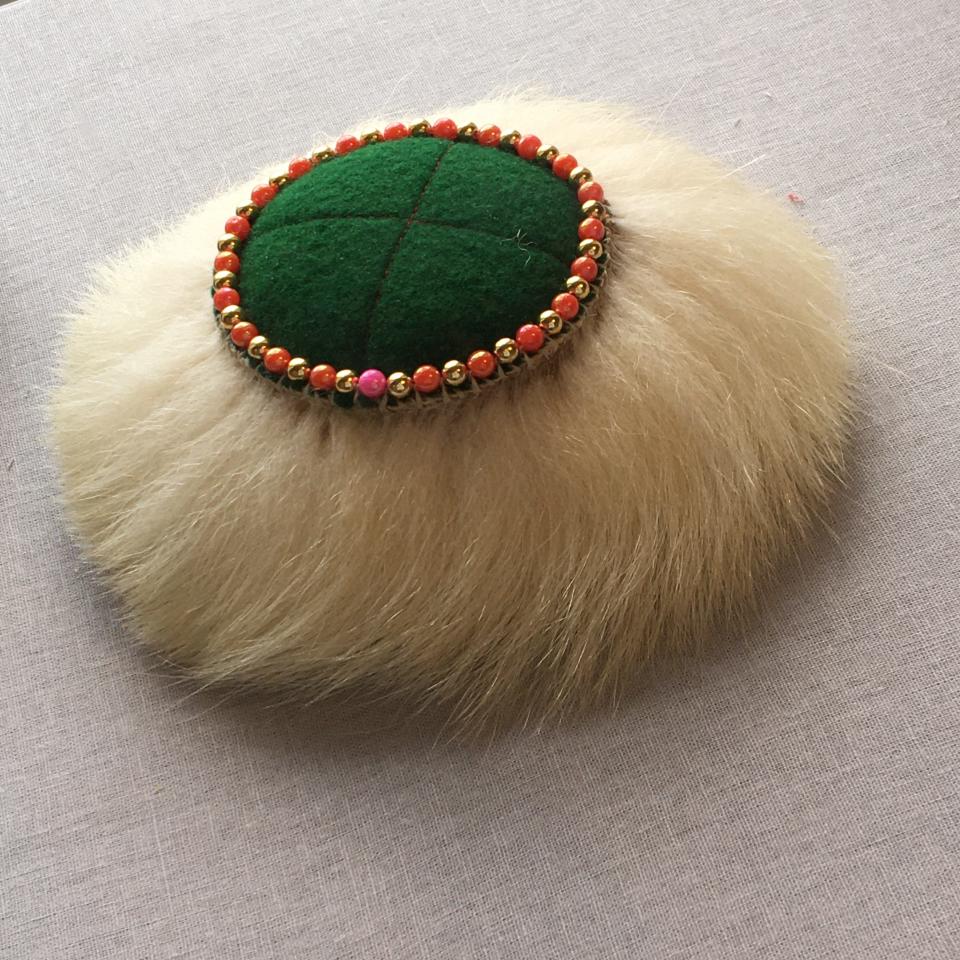
Polar bears also appear on tiles and Delftware and a beer pint glass as well as salt and pepper shakers.
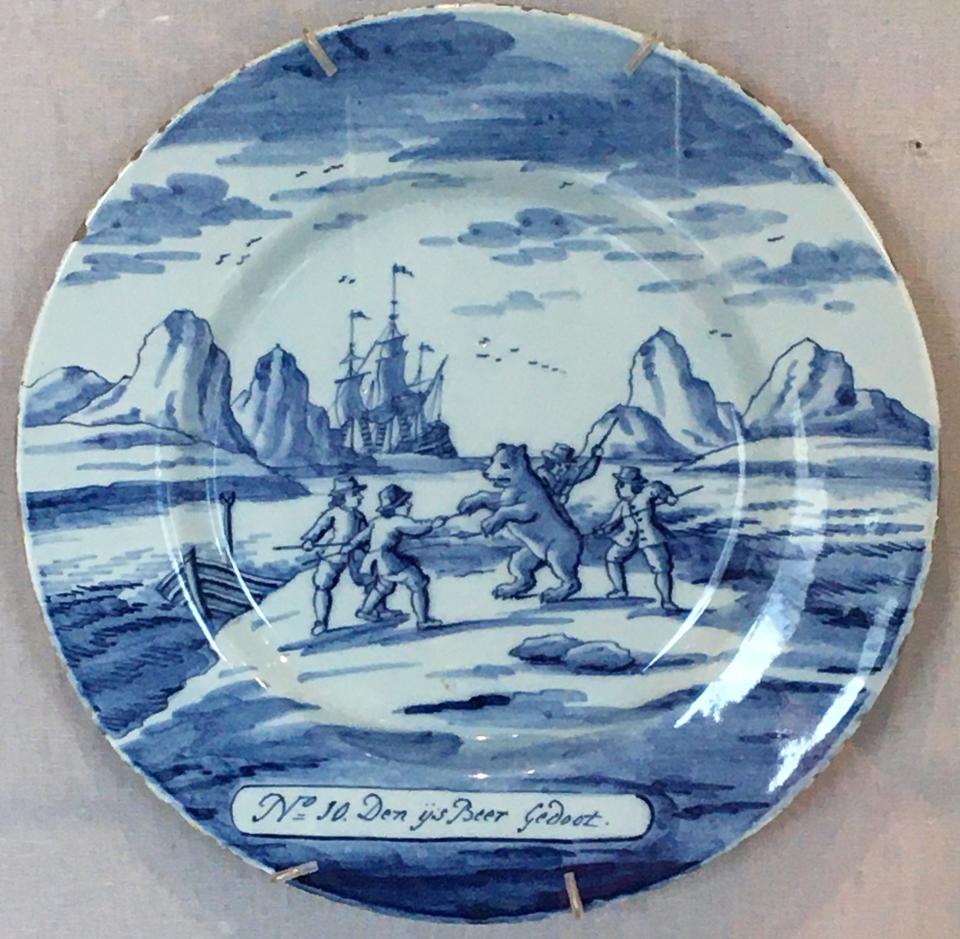
And there is Tabitha Vevers’s “Try Not to Think of a Polar Bear,” oil paint and 23k gold leaf on Mylar. A polar bear carefully walks across a tightrope over a chasm and looks at the viewer, almost forlorn, as if asking for help.
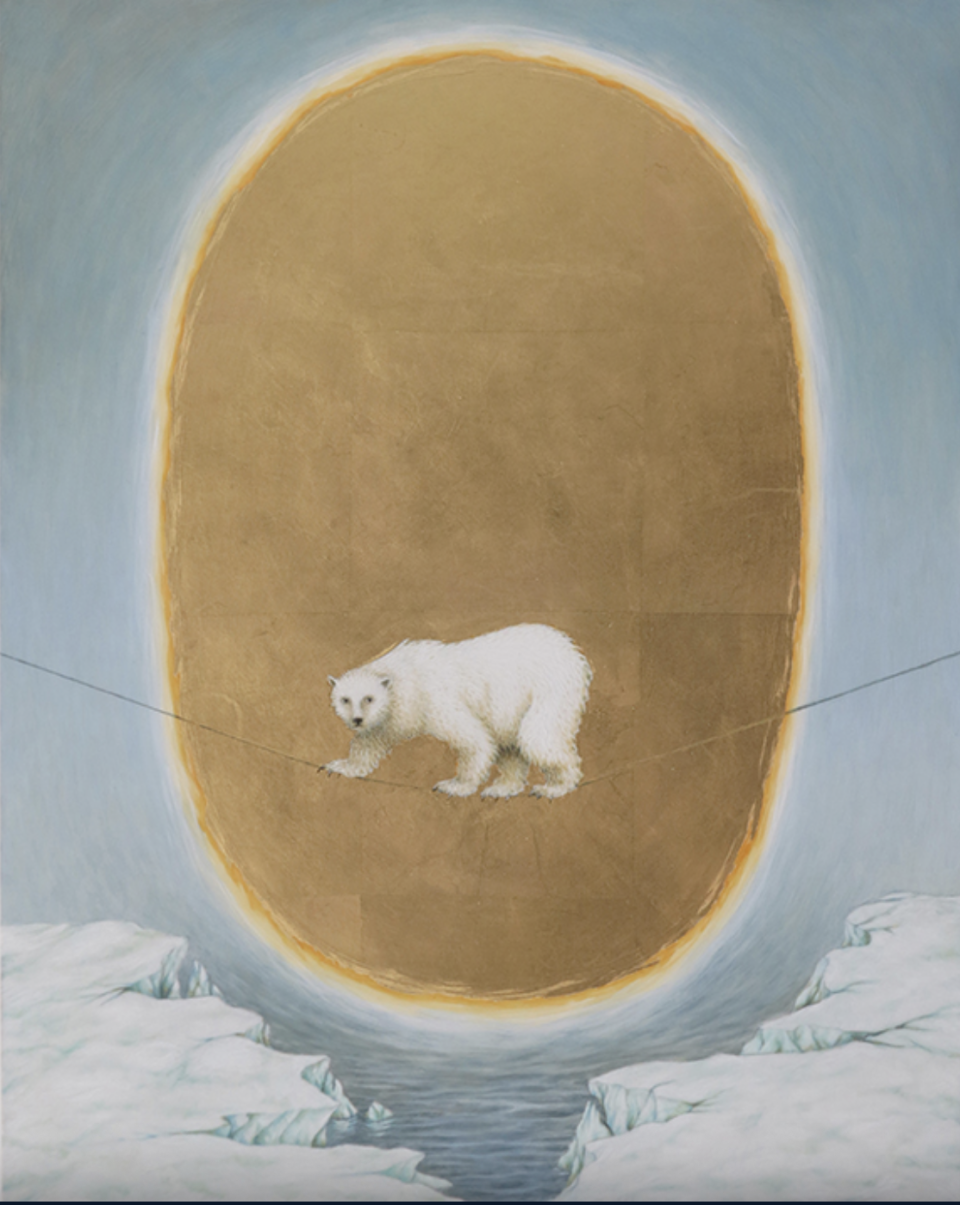
It is the one work that succinctly and perfectly captures the essence of the show.
“Polar Bears (Ursus Maritimus) and the Arctic Imaginary” is on display at the New Bedford Whaling Museum, 18 Johnny Cake Hill, New Bedford, until May 7.
This article originally appeared on The Herald News: Art Beat visits Polar Bears exhibit at New Bedford Whaling Museum

